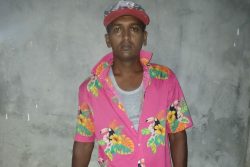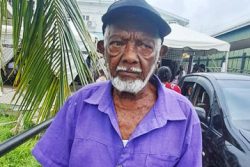Dear Editor,
I followed the recent ‘diabetic walk’ in Guyana and I am very surprised, and even frightened, reading that some ‘60,000 Guyanese are being affected by diabetes.’ No wonder worldwide, it is estimated that 240 million individuals live with undiagnosed diabetes, with nearly half of all adults with diabetes being unaware of their illness. Let it be known that the ‘supposed’ developed world is not exempt from this chronic disease, as it affects millions of people in the U.S. where the total percentage of people ages 18 or older in the United States with diabetes has increased from 10.3% in 2001-2004 to 13.2% in 2017-2020. This rise continues. In Canada, 30% of the population live with diabetes or pre-diabetes; 10% live with diagnosed diabetes, a figure that climbs to 15% when cases of undiagnosed Type 2 diabetes are included. And as we know, diabetes imposes a heavy financial strain on healthcare systems worldwide, but the Guyana Government knows this and has been responding favourably.
For example, on the occasion of World Diabetes Day, commemorated on November 14 (the theme being “Breaking Barriers, Bridging Gaps”), the Ministry of Health (MOH) announced its grand plan to improving the prevention, diagnosis, and treatment of diabetes in the country. The idea is to include “… implementing new clinical guidelines, expanding screening services, improving access to specialised care, and enhancing the provision of essential medications for diabetic patients.” Currently ongoing in the fight against diabetes is the HbA1C testing, which is the standard tool for diagnosing and monitoring diabetes, especially for patients needing precise blood sugar management. HbA1C (HbA1c is what is known as glycated haemoglobin) tests provide a three-month average of blood glucose levels, offering a more comprehensive view of blood sugar control over time than traditional glucose tests. This advanced screening tool is now accessible in 82 health facilities nationwide, helping healthcare providers monitor patients’ progress and adjust treatment as needed.
Editor, it is vital that people capitalise on this offer from the Ministry of Health. It can make a world of difference. Medical students know that this ‘glycated haemoglobin’ is something that’s made when the glucose (sugar) in the body sticks to the red blood cells. The result is that our body then can’t use the sugar properly, so more of it sticks to the blood cells and builds up in the blood. And since red blood cells are active for around 2-3 months, the reading is therefore taken quarterly. Another thing that must be appreciated by Guyanese is that they be aware of and make the most of the recently, updated national guideline for preventing and treating diabetes. I speak here of the evidence-based guideline that outlines best practices in diabetic management, and which focuses on lifestyle modification, early diagnosis, and comprehensive treatment plans. It also emphasise the importance of regular monitoring and patient education, thus enabling supporting healthcare providers to better deliver the most effective and individualised care possible.
A few remarks now on the ‘2k/5k walk/run’ that was held to raise awareness of the diabetic situation in Guyana. I am indeed impressed that stigmatization and inclement weather did not deter the participants from giving visible support. The initiative, organised in collaboration with Stride 592 and the Guyana Diabetic Association, was aimed at focusing on what was described as “one of Guyana’s most pressing health challenges-diabetes.” In the words of the Minister of Health, Dr Frank Anthony, who himself participated in the walk, “Diabetes is one of the chronic diseases that we’re looking at in the ministry … (and) the approximately 60,000 affected is quite a big number.” What is quite worrying is that, as the minister pinpointed is “that many Guyanese remain unaware of their diabetic status.” He detailed that “A number of these persons are not even aware that they have diabetes. So, if you’re not aware, you will continue doing whatever you’re doing, and you’ll get sicker and you’ll get complications. And then you’ll come into the hospital with complications.”
His wise and medically attested advice is that “We want to encourage people to get tested. And if you’re tested and you are pre-diabetic, then you can take precautions that will prevent you from getting diabetes or delay the onset of diabetes.” He furthered counselled that “If you’re diabetic, there are certain things that you can do. For example, if you eat appropriately, if you exercise, get good sleep, and you’re not stressed, then these things can help you to, well, not prevent, but at least manage it.” Amen! However, I reiterate that even when there are complications, the Ministry has prepped itself to respond to the high risk of kidney disease associated with diabetes, the Health Ministry has expanded nephrology services across regional hospitals, allowing diabetic patients to receive regular kidney function tests and specialised nephrology care. The same it is where eye care is concerned. And overall, “… there is the availability of medications for patients living with diabetes as the ministry has secured a steady supply of diabetes medications, ensuring that patients throughout Guyana can access essential treatments for managing their condition. Insulin and other drugs are now more accessible at public health facilities.”
I cautioned that diabetes, the silent epidemic, keeps claiming an estimated 6.7 million lives around the world each year. This number is close to the total recorded death toll from the COVID-19 pandemic. One in ten adults is affected by the condition, and it is one of the top 10 causes of death globally. Let’s beat it.
Sincerely,
HB Singh






